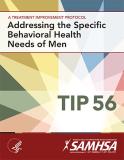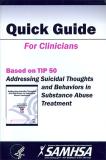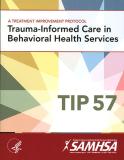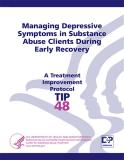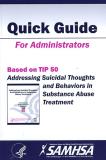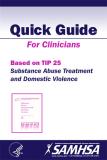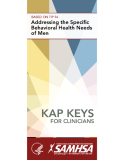
This guide provides clinicians with treatment, screening, and intervention tools to address the needs of men in recovery.
Units per Product
Download
Addressing the Specific Behavioral Health Needs of Men
File Type: PDF
File Size: 236 KB


